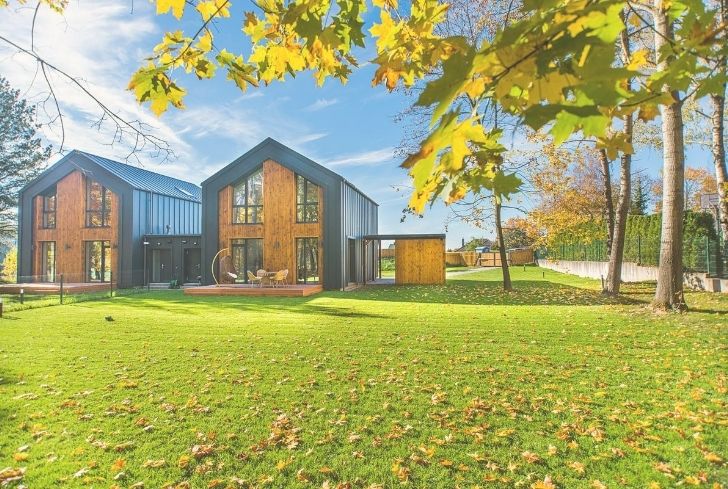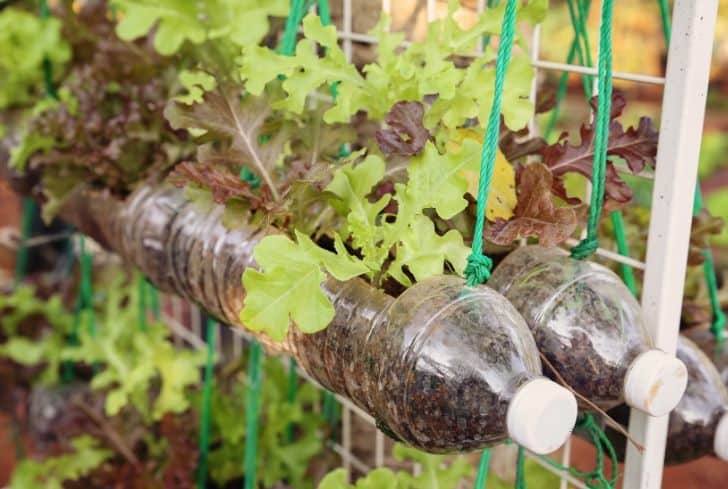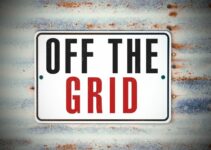With the constantly changing environment around us, it’s important to be environmentally aware and active. It’s even more important when you consider how much money you can save by building a green home. The methods and ways you can go about changing your home from an emission-producing powerhouse into more of a greenhouse are easy and simple concepts. Everything you can think of in order to save energy can be implemented in creating a green space for you and your family.
Being aware of energy-saving benefits, making the switch from waste-producing products to more environmentally friendly products, and much more. By creating and managing a green home for you and your family to live in, not only will you be engaging in a positive atmosphere – but also you’ll be passing on the lessons and importance of surrounding environmental issues to the rest of your family.
While in the long run, going green will save you lots of money, the initial renovations needed to go green can sometimes be costly. Consider obtaining a home equity line of credit to finance your green home endeavors.
Some Cost-Effective Benefits of Going Green in Your Day-To-Day Life
In order to have a productive green home, you need to be able to cut costs when required. This means using less electricity and trying to eliminate the products that have a negative impact on the environment. Although it’s obvious that there are many cost-effective ways to go green, some of them are often forgotten. Here are some of the top reasons why you should choose to go green in your household for the sake of your budget.
- You can eliminate the stress that comes with paying high monthly bills.
- Saving money for other things like trips, special occasions and outings.
- Reducing your carbon footprint.
- Encouraging others in your family to save energy by eliminating the use of certain things during high peak or mid-peak hours (on par with what your energy company has outlined).
- You can put the money you saved to good use, no matter what it is.
15+ Amazing Green Home Building Ideas and Techniques
1. Location, Location, Location
While buying property for yourself, take note of a couple of things that you must foresee before moving in. Firstly, avoid building west facing home. This will keep your home cool as it minimizes sun exposure. Secondly, avoid building a home in environmentally sensitive locations such as earthquakes or hurricanes or flood-prone areas. Thirdly, check if public transportation is easily available and local grocery shop is not that far away. This will help you avoid taking your own vehicle every time and will reduce your travel time.
2. Smaller is Better
A small home built with eco-friendly techniques is going to have a smaller environmental impact against a large home. A house that is too large is likely to cost more to heat and cool. Try to keep the place manageable and cost-effective. If you are planning to extend your family and bring in a few relatives, you need to put proper resources and accommodation in place.
3. Energy Efficient Equipment
ENERGY STAR label on a piece of equipment states that a particular product has been deemed as energy efficient by the Environmental Protection Agency (EPA). ENERGY STAR is becoming a well-known label, and consumers today choose energy star appliances for their homes. These appliances offer significant cost and energy savings without compromising performance.
4. Proper Insulation
Insulation is one of the most important things that you need to consider while building a green home. Heating and cooling account for 50% of your home’s energy consumption. Air leaks such as around windows, doors and ductwork are responsible for building heat loss.
Don’t let heating and cooling of the air of your interior space go waste through improper insulation. Proper insulation will not only reduce your energy consumption but will bring down your electricity bills substantially.
The use of Green Insulation has proven to be a sustainable construction technology as it eliminates the need for high-end finishes made from non-renewable materials. Green insulation offers a solution by making use of old and used materials such as denim and newspaper.
5. Reduce, Reuse, Recycle
Reduce your need for buying new products that are not environment friendly. Reuse your old material such as wood floors, doors, windows in your next home. Recycled materials such as recycled glass, aluminum, recycled tile, reclaimed lumber, recycled plastic can be used in green homebuilding.
6. Use Sustainable Building Materials
If building a green home is your goal, then using environmentally or eco-friendly products should be on your list, which can reduce the impact of construction on the environment. Each and every part of your house, such as roofing material, building material, cabinets, counters and insulation to your flooring, should be environmentally friendly.
Use products such as reclaimed lumber, recycled plastic, recycled glass or natural products such as bamboo, cork and linoleum, which are made of natural, renewable materials. Even organic paints aid to limit the negative impacts on the environment as they easily breakdown without the release of toxins.
7. Install Solar Panels
Solar energy is a clean and renewable source of energy. Solar panels are an emerging and hot technology for people who want to utilize the natural power all around us, the sun. Solar panels may be expensive at first, but the long-term savings you can put into your pocket is a stunning example of the benefits of turning your life from black to green.
The location of your house and the way you have constructed solar panels can determine how much power you can collect. By taking advantage of solar power, you can bring down your energy consumption and supply excess energy, if any, to your utility company. Also, government grants, incentives and tax breaks are a huge bonus to those who want to use solar power in their home.
8. Energy Star Windows
Energy efficient windows labeled as ENERGY STAR windows are a new player in the window market and are much more energy-efficient than normal windows. The ratings for these windows determine how energy efficient they will be. The lower the rating, the more energy-efficient are your windows. The energy savings provided by these windows are enough to cover the added cost per window.
9. Rainwater Harvesting Systems and Tankless Water Heaters
Install a rainwater harvesting system while building your green home to collect rainwater from roofs and then storing it in a tank. The collected water can then be used for other purposes, such as toilets and sprinkler systems. Rain barrels are one of the most common methods of rainwater harvesting being used today.
With tankless water heaters, you need not wait for the water to get heated. Tankless water heaters heat only that much water that is needed as it is passed through the electric coil. This gives you twin benefits. Firstly, it eliminates excess energy costs as it heats up only that much amount of water that is needed and secondly, you can get ample storage place by eliminating the hot water tank.
10. Eco-Friendly Lighting
Both LED and CFL cost more upfront but use less energy and last longer than traditional incandescent bulbs. Since they offer significant cost savings in the long run, they can be ideal for your new green home.
11. Water Conserving Fixtures
Low flow faucets, toilets, showerheads are a few of the ways that you can use while building a green home to conserve water. They can cut down on your water bills cost and make your home much more environmentally friendly. Apart from that, consider buying washing machines and dishwashers that give you same kind of cleaning and can save water and energy.
12. Programmable Thermostat
We all know that almost 50% of our energy consumption goes towards heating and cooling of our home. The simplest way to cut down this cost and reduce the electricity bill is to install a programmable thermostat. Your HVAC system will work when the thermostat reaches the designated temperature. Also, a slight 3-5 % of your energy bill can be saved if you can set your thermostat 1 degree down in the winter and up by 1 degree in the summer.
13. HVAC System
Buy a high efficiency, Energy Star rated HVAC system based on the design and construction of your house that will help you save energy and money. An HVAC system needs to be properly installed so that it could perform up to its full potential. Make sure ducts are short, straight and airtight. The ducts need to be professionally tested with the goal of under 10% leakage.
14. Efficient Landscaping
Shady landscaping can protect your home from direct sunlight during the summer and allows more sunlight to reach your home through windows during the winter. Planting trees on the southern and western side of your home can keep your home cooler as they will block sunlight from falling directly on your home, and during the winter, when trees lose their leaves, they will allow more sunlight to reach your home.
15. Harness Geothermal Energy
Geothermal energy is known as energy from the earth. Geothermal energy requires more upfront investment but provide unlimited energy to heat and cool your home. During the winter season, a geothermal heat pump uses the earth loop to extract heat from deep underground to your home’s HVAC system; in the summer season, heat is extracted from the air and moved back into the earth through a loop system.
16. Cool Roof
The material used on your roof can make a dramatic difference in your home’s energy efficiency. You may want to consider a product that reflects the sun’s energy away from the roof, cools faster at night and holds less heat for less time in order to help reduce energy costs and usage related to heat. Slate, terra cotta, white tiles, special membranes, and metal roofing are a few of the roofing products available with varying degrees of green benefits.
Another great idea is the “living roof” also known as green roofs because it’s just so…cool. Living roofs are constructed to hold plants that grow on the roof to catch and filter rainwater and will insulate the home. This also prevents roof water from running directly into the storm sewer system. Living roofs are used more frequently in commercial buildings; however, it certainly can be incorporated into residential roofs.
As the green options typically are more expensive both in terms of materials and installation, you’ll likely recoup the costs through energy savings, the longevity of the product and minimal maintenance required.
17. Electrochromic Smart Glass
Electronic Smart Glass also constitutes one of the technologies in sustainable construction. This new technology works particularly in summer periods to shut out the harsh heat of solar radiation. The smart glass uses tiny electric signals to slightly charge the windows to change the amount of solar radiation it reflects.
It allows users to choose the amount of solar radiation to block as it is incorporated into the building’s control system. With this technology, homes and commercial buildings can save a lot on heating, ventilating, and air conditioning costs.
18. Rammed Earth Brick
Rammed earth brick is an ancient construction technology that has lately been re-introduced to cater to the demands of environmental sustainability. The technique uses sustainably sourced raw materials. Due to technological advancements, the process of building a rammed-earth structure has been made easier, but it still follows the ancient preparation process.
19. Zero-Energy Mechanisms
Sustainable construction technologies mean mechanisms that lessen energy consumption. The construction of buildings with wood, for instance, is a sustainable construction technology because it has a lower embodied energy in comparison to those build of steel or concrete. The technology incorporates designs that prevent air leakage and allows for the free flow of air while at the same time using high-performance windows and insulation techniques.
How To Become Greener In Your Household?
Some people think that going green can be a costly or difficult venture. However, there are so many different methods that people choose to go with that can help you save both the money and the effort that goes into making an extensive green energy plan for your home. Some of these methods are often forgotten by people who make green energy plans because they are just so simple and overlooked. These methods are:
- Turning off any lights or appliances when you don’t use them.
- Remembering that even when you’re not using something and it’s plugged in, it’s still eating away at potentially saved energy (this includes things like laptops, cellphone chargers, essentially everything you can think of that is plugged in).
- Buying only recyclable containers and reusing plastics for food storage.
- Creating a family energy plan that everyone can plan their daily routine by.
- Having safe and environmentally friendly alternatives for things like entertainment. Eliminating the extensive use of the television or the Internet is also a great way to get the family more involved with one another. Plan family game nights and other fun ways to spend your time together.







